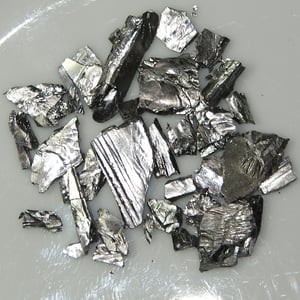Pantheon International plc (LON:PIN) is the topic of conversation when Hardman & Co’s Analyst Mark Thomas caught up with DirectorsTalk for an exclusive interview.
Q1: Your recent report sits behind a disclaimer. What can you tell us about that?
A1: It is just the standard disclaimer that many investment companies have. In essence, for regulatory reasons, there are some countries (like the US) where the report should not be read. In the UK, PE is seen as a complex investment, and the report is targeted at professional/qualified investors.
Q2: So, you called your note “FY’21: 20% NAV growth; right place at right time”. What can you tell us about it?
A2: The note explored how Pantheon International had delivered a 20% NAV growth over the year to end-May. The key driver is the underlying earnings. PIP’s buyout company sample reported FY’21 weighted average revenue and EBITDA growth of 13% and 20%, respectively, outperforming the MSCI World Index by 23% and 41%.
Picking the right managers and co-investments (with the operational and financial support that PE provides) in resilient sectors generated this vastly superior growth. Being in the right place at the right time has seen comparable public market ratings increase and this has also led to higher valuation ratings for PIP.
We note, though, that PIP’s average rating has moved from being 2.4% above the MSCI World Index level to 4.2% below, its lowest relative rating in five years. The balance sheet is strong and well positioned to fund new opportunities. The shares trade at a 21% discount to NAV.
Q3: Can you give us a brief summary of its portfolio?
A3: PIP’s portfolio is evenly split between primary (where PIP invests in a PE managers’ fund), co-investment (where PIP invests alongside a PE manager but owns the investee company share directly) and secondary investments (where PIP has bought a position in the markets rather than making the initial investment). Including secondaries, which only hold one asset, PIP’s direct company holdings now account for 46% of the portfolio.
PIP’s focus is buyouts (66%), biased to small-/mid-sized deals where there is less competition. Healthcare/IT now account for 49% of the portfolio.
Q4: The operational beats look impressive. So how did they do it?
A4: The key driver to sustained outperformance is that PE, and PIP’s activities in PE, add value to the underlying companies. One metric for this is growth, in both revenue and EBITDA. The charts below show the medium-term history for PIP, compared with the MSCI World Index.
Outperformance, in FY’21, was staggering, with weighted average revenue and EBITDA growth of 13% and 20%, respectively, for PIP’s sample buyout companies, against MSCI World Index average falls of 10% and 21% for the same period. The 41% outperformance in EBITDA is nearly twice the highest levels seen since 2013. There are several key drivers to this outperformance.
First is sector and sub-sector selection (i.e. defensive sectors with structural growth and recurring revenues). Healthcare and IT now represent 49% of the portfolio and, in a broad consumer sector, PIP is focused on lower-risk sub-sectors, rather than those dependent on discretionary spend.
Secondly, PE managers have added operational value in areas such as supply chain management, HR and treasury, plus cross-fertilising experience between regions. During COVID-19, tech enablement/digitalisation, a tool used by PE managers to create operational value, has been even more critical than usual.
Thirdly, some investee companies have used the opportunity to grow via the acquisition of less-well-funded competitors.
Q5: What can you tell us about the strategic risk reward that Pantheon International offers?
A5: PIP operates in an attractive market, can pick the best part of that market and has competitive operational advantages. Its manager and deal selection, and portfolio structuring, add value. To end-Jun’21, this delivered 11.9% annual NAV growth since inception in 1987. Corporate governance is strong, and the NAV is conservatively valued. Investors get liquid access to the global PE market.
There are risks around the cycle, and illiquid and unquoted underlying assets. The discount appears anomalous with risk-adjusted returns relative to markets and peers. Compared with markets, PIP has delivered higher long-term returns and, in periods of downturns, such as last year, its NAV has been materially less volatile than overall markets.
Its returns relative to peers appear to be similar, but it is much less over-committed. PIP generated cash in 2020 while many peers had to draw on credit on lines.







































